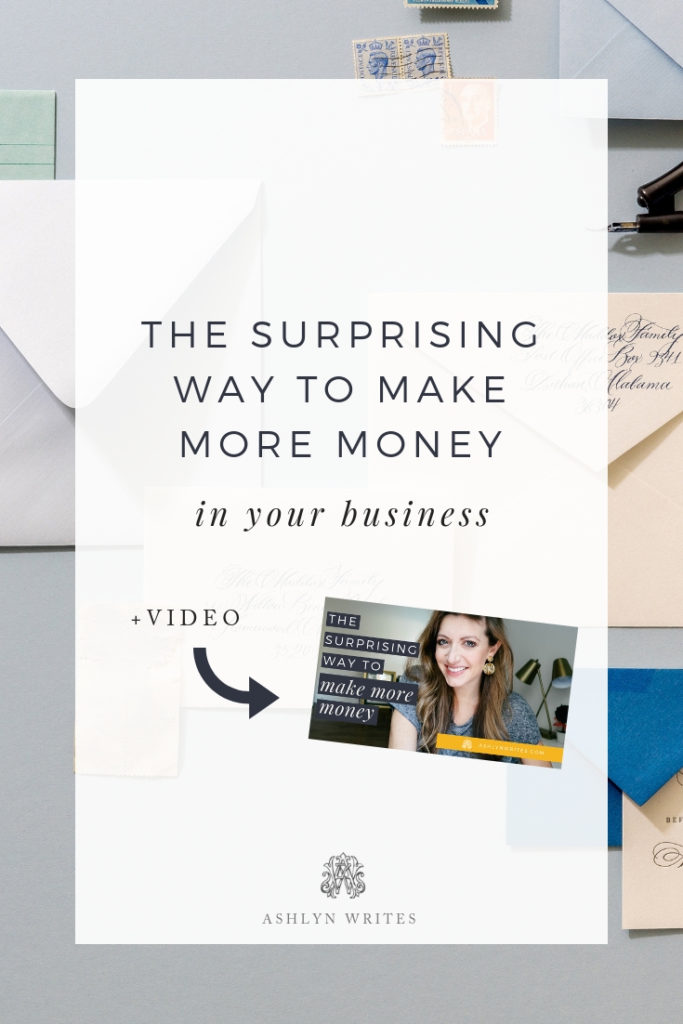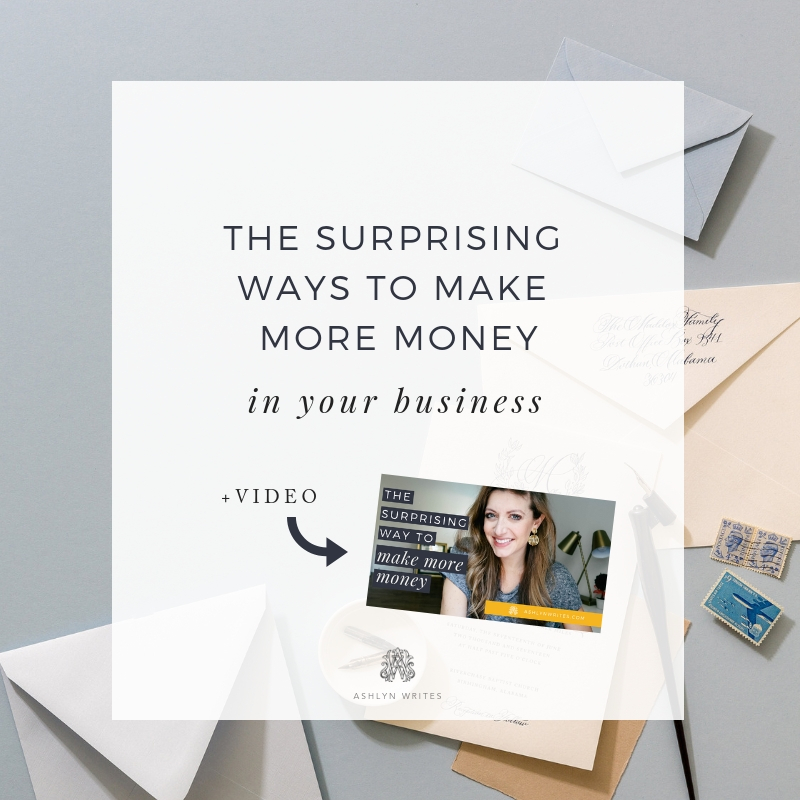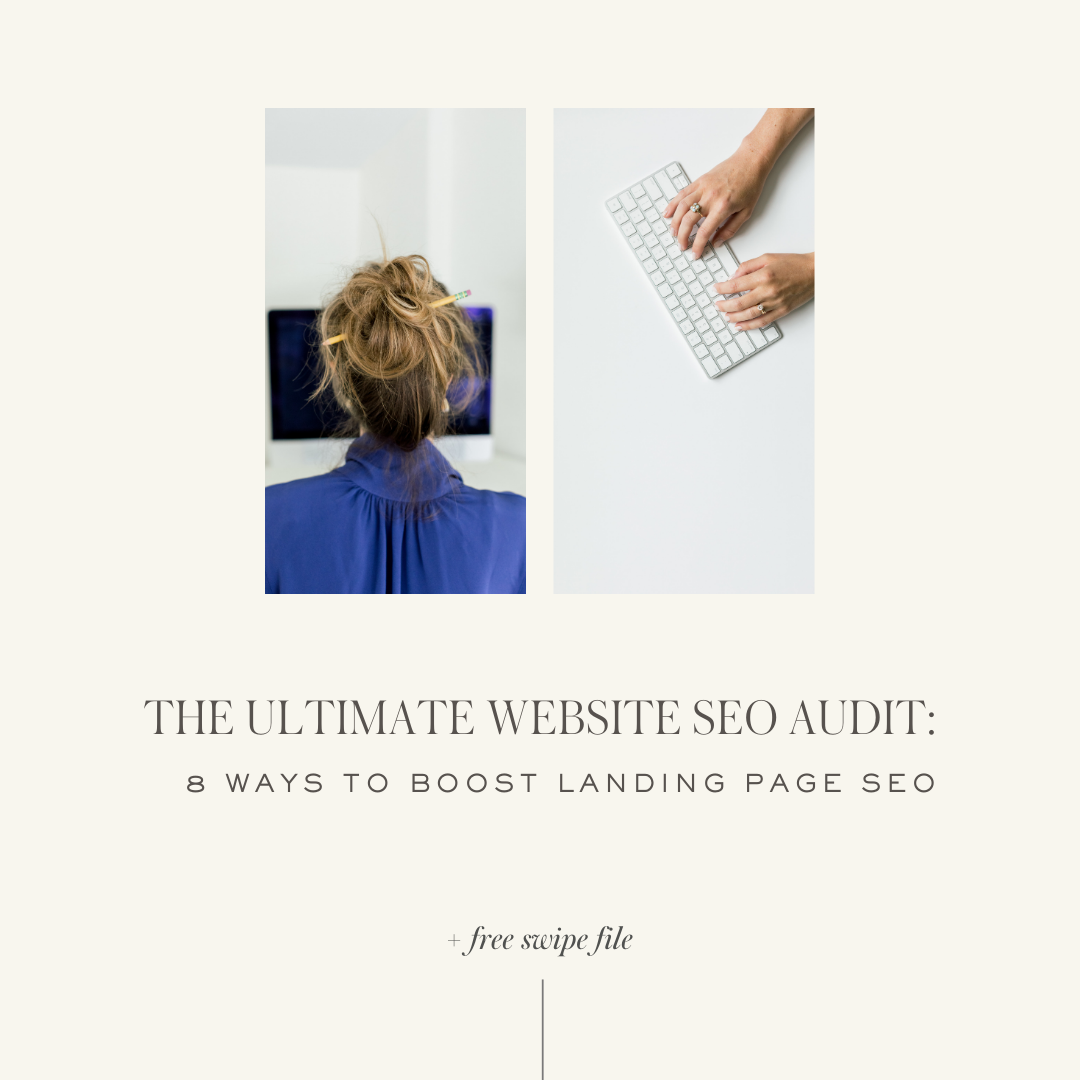Somebody told me once that you grow into your own advice.
I started my business day 1 by saying I wanted to work from a place of rest—not hustle. Hustle’s my go-to, my shotgun rider, my arm-in-arm comrade … it’s a good thing, but in my past it’s been the ultimate thing. Hustle serves its purpose for a season, but it’s not 24/7 sustainable.
Instead, I wondered, couldn’t I learn to work out of a place of sabbath each week? Did I really have to fall from one week straight into the next?

The Lord set my heart on this idea as I started my business … but my first year of business didn’t QUITE look like like I thought it would! I replaced my corporate income, but I. was. EXHAUSTED … all over again.
Today, I want to dig into the surprising way I learned how to make more money as a business owner.
You’ll learn:
- The lie most creatives believe that drives me up the wall
- One number you need to know … yesterday
- How to calculate your need for the upcoming financial year/what that actually looked like for me
- 6 ways I built in rest as a creative entrepreneur
Let’s go!
Want more? My friend Shanna is leading a FREE video series all about how to bring the basics back to the finances of your creative small business. Click here (or below!) to get in on it!
The Money-Making Lie Many Creatives Believe
I’ve said it from the stage before, but I hate the lie so many creatives believe:
Follow your heart and do what you’re passionate about, and the money will follow.
No.
Absolutely not.
That completely negates the idea that laws of supply and demand factor in running a business. Just because we’re “creatives” doesn’t mean that we’re immune to such economic principles.
Instead, I don’t believe you make more money by doing “what you’re most passionate about.” Gag.
You don’t make more money by working longer hours than anyone else.
You don’t even make more money by simply by being “the best.”

Counterintuitively, I learned you make more money by cutting DOWN: I saw it during days of pencil skirts and stilettos in corporate marketing, as companies I helped market trimmed product lines and tightened marketing messages, but I didn’t really *get it* in my own business until 2018.
Here’s the thing: Apple made more money cutting products in 1998 (source, super interesting article).
After a bit of time in business, I looked up and realized I was my new hardest boss. I’d quit “40” hour workweeks to work 80-hour workweeks for myself.
I decided it was high-time to start applying the “cut down” principle in my business. It was time to see if we could ACTUALLY grow our revenue with it.
I’d done it with my messaging—something I share a lot with my Copywriting for Creatives™ students at the beginning of the program: the tighter my message became, the more revenue we started to see.
But what if I got gutsy and applied to my time? To my list of offerings and services? COULD we grow the revenue?
The #1 Number You Need to Know as a Creative
Okay, so as the boss, you write your own paycheck and decide how much that paycheck is going to be. For most creatives? The money is whatever’s leftover!
I get asked a lot how to get things done and WHERE to spend our time and money as a business owner. This is one way I work through that: finding and knowing my hourly rate.
If you don’t know what your time is worth you can’t expect the world to know either.
To get started thinking through where to spend your time (and understand if the time you’re spending on tasks is profitable), know what your time is worth.
Ever felt like you have to be doing “all the things” or taking “all the clients” to grow your revenue? Figuring out this little number will cure that.
(It should also help if you’ve wondered how to organize your time and schedule well!)

Now, I will say we hold a tension here. This thinking—this thinking about our time as money—only works if we can zoom out and remember the broader calling we have as creators: people are always a good use of time, and work is a good thing … but it’s not the ultimate thing.
When we live in a system of constantly seeing things as dollar signs and efficiency, we’re bound to dishonor people … because they’re not always an efficient use of time and energy.
But, as creatives and as MORE than hobbyists, we should think about the purpose of business. A lot of business owners—especially creatives—tend to lose sight of that altogether.
The purpose of a business is to make not JUST a difference, but to make money, right? To make more money than you put in—and hopefully a good bit more, so we have profit! Time must be invested accordingly.
The first step? You need to know your hourly rate.
I touch on how to figure that out inside my FREE masterclass, Time Well Designed: How to Get More Done and Get Freed Up to Get More Done as a Creative, and unpack it more inside The Art of Efficiency™. Check out how to get details on that below!
Calculate Your Need & a Spending Plan for the Upcoming Financial Year
Okay, so once you know your hourly rate, that’s a HUGE part of taking a step to making more money in your business … and towards being more efficient.
BUT, you need to calculate a money plan for the upcoming financial plan to ~actually~ put this guy to work and make it hum!
Y’all know I’m a big believer in The Blueprint Model, the system that we use to calculate and run my business. (Click here to read how I pay myself as a creative entrepreneur!)
I LOVED that my friend Shanna called the b-word—ahem, “budget”—a “spending plan” (my husband did, too!)
Here’s the gist of calculating a spending plan:
- Reverse engineer your numbers. I talk about it more in this post, but essentially, figure out “enough” for you and work backwards to see what you need to sell
- Establish a money plan for your business. This helps me see exactly how many clients we need, and exactly what I need to sell. I know when I need to ramp it up and push harder to round out sales, I know exactly what months I’m taking off to breathe.
- Have the plan, work the plan. That’s all it is. I reverse engineer my marketing and content plan to hit this plan, too. Click here to read more how I set up a marketing and PR plan in my business.
Now, that’s super simplified, but y’all, you have GOT to figure this out as a business owner. Like I said, just because you ~*love*~ writing/photography/painting/calligraphy/coaching/wedding planning/etc. DOES NOT mean it’s going to be profitable. Even because there’s a need doesn’t mean it will be profitable.
Find the “you” size hole in the market, and go fill it (I say that a lot, my students tell me) … but calculate a spending plan so you can actually pay yourself, too.
And then rest. ????
6 Ways I Built in Rest as a Small Business Owner
Whoop! Kk, if we’re jiving with the idea that it’s counter-intuitive but surprising to cut time/money/products/etc. to make more money, I’m wrapping up with ways I’ve learned to build in rest.
- I plot out weekend ideas around Wednesday or Thursday (Check out my The Art of Efficiency™ course, where I dive into this and hand over my worksheet)
- We plan for and take an annual *paid* sabbatical (and yes, I think it’s important that it be paid!)
- I take one day off fully a week from work, something that was my 2018 goal :: I kept to it for the most part! Pregnancy threw a wrench in things, and as I prepped for our sabbatical I worked a few Sundays, and I totally worked a few Sundays in November right before going on leave in December. The first Sunday of 2018 when I wasn’t working, I cried in the car to Wes and asked if this is what it felt like to not work 7 days a week, HA.
- I try to take 1 hour a day, 1 day a week, 1 week a year off social media.
- I proudly DO NOT do a lot of things—again, my The Art of Efficiency™ insiders know how I’m big on finding the 20% only you can do (something we find inside the program!), but we also make an “It’s Thursday” list …
- I only took on 7 personal clients in 2018 and figured out how to grow a team to help me :: Before this, I serviced every single client with hours and hours.
See related: Where to Spend Your Money as You Build a Creative Biz: Small Business Investment Tips

AH! I love talking about this stuff, and I hope this behind-the-scenes in my business was helpful!
Want more? My friend Shanna is leading a FREE video series all about how to bring the basics back to the finances of your creative small business. Click here (or below!) to get in on it!
Reading Time: 7 MinutesReading time: 7 min. Somebody told me once that you grow into your own advice. I started my business day 1 by saying I wanted to work from a place of rest—not hustle. Hustle’s my go-to, my shotgun rider, my arm-in-arm comrade … it’s a good thing, but in my past it’s been the ultimate thing. Hustle […]





comments +